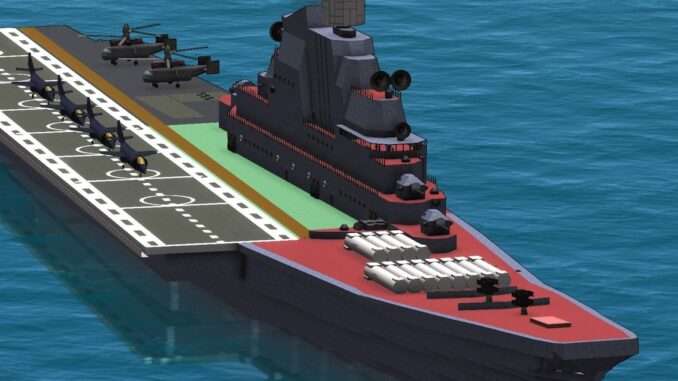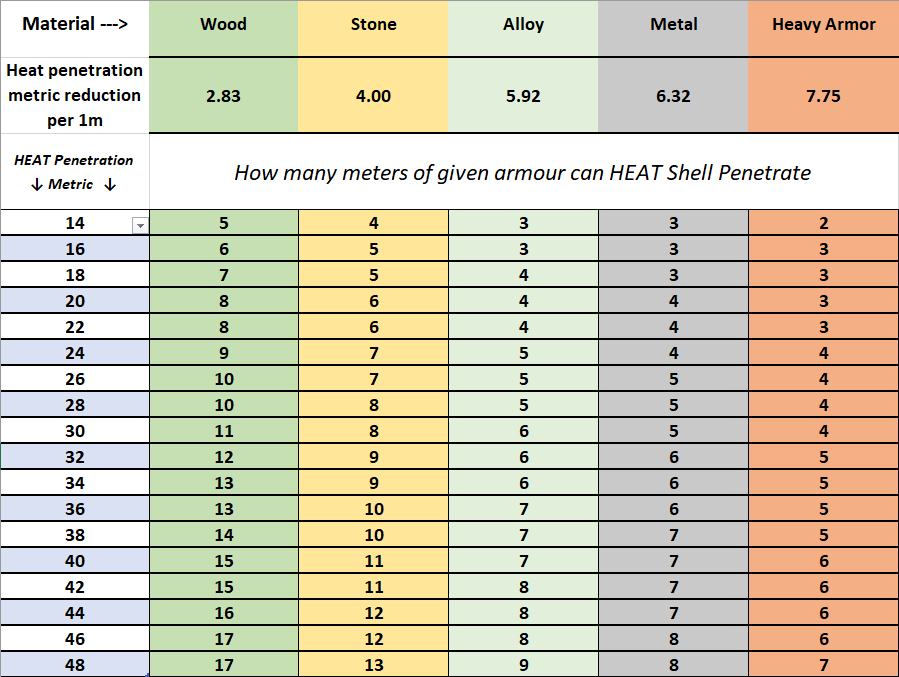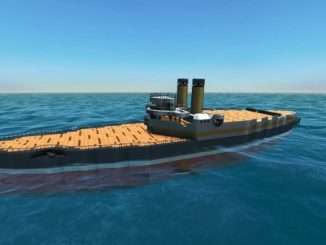
After a heat shell went through more than expected, I decided to do some testing and this is the result.
Heat Penetration Explained
Сrеdit gоеs to ILLI!
This Is Nothing Too Special
This is the result of some experimenting and calculating after witnessing a HEAT shell go through something that it should presumably not have been able to go through.
As a byproduct, I made this table that shows how much armor a HEAT shell can penetrate with given penetration metric and armor material.
Le Täble of Data

So, About the Results
TLDR: Use spalling lines or air gaps. HEAT bites deeper than expected.
According to the game, a HEAT shell loses its penetration metric when penetrating a block, and the lost amount is equal to the square root of the AC of the block that is penetrated. And if the shell loses all of that penetration metric before the fragments are released (which happens when hitting a non-structural block or an air gap), then the blast is mitigated.
So let us do a little hypothesis. A heat shell with a penetration metric of 15 hits a wall of stone that is 4 blocks thick. A single block of stone has an AC value of 16, and the square root of 16 is 4. So when the shell goes through one block of stone, it will lose 4 points of penetration metric. There are 4 stone blocks to go through, so it will lose 4 times 4 points, which in total is 16, reducing the penetration metric to 0 when hitting the last stone block, so the blast should be mitigated right?
Let’s put that to the test.
…it goes through.
This is because the amount of penetration metric lost seems to be calculated after the block has been penetrated, meaning that if the shell doesn’t lose all its penetration metric before hitting the last structural block, it will go through the last block no matter what, even if said block is made of heavy armor. The weakest HEAT shell possible can still go through 2 blocks of heavy armor.
So yeah, remember to use spalling lines or air gaps in your craft.





Be the first to comment